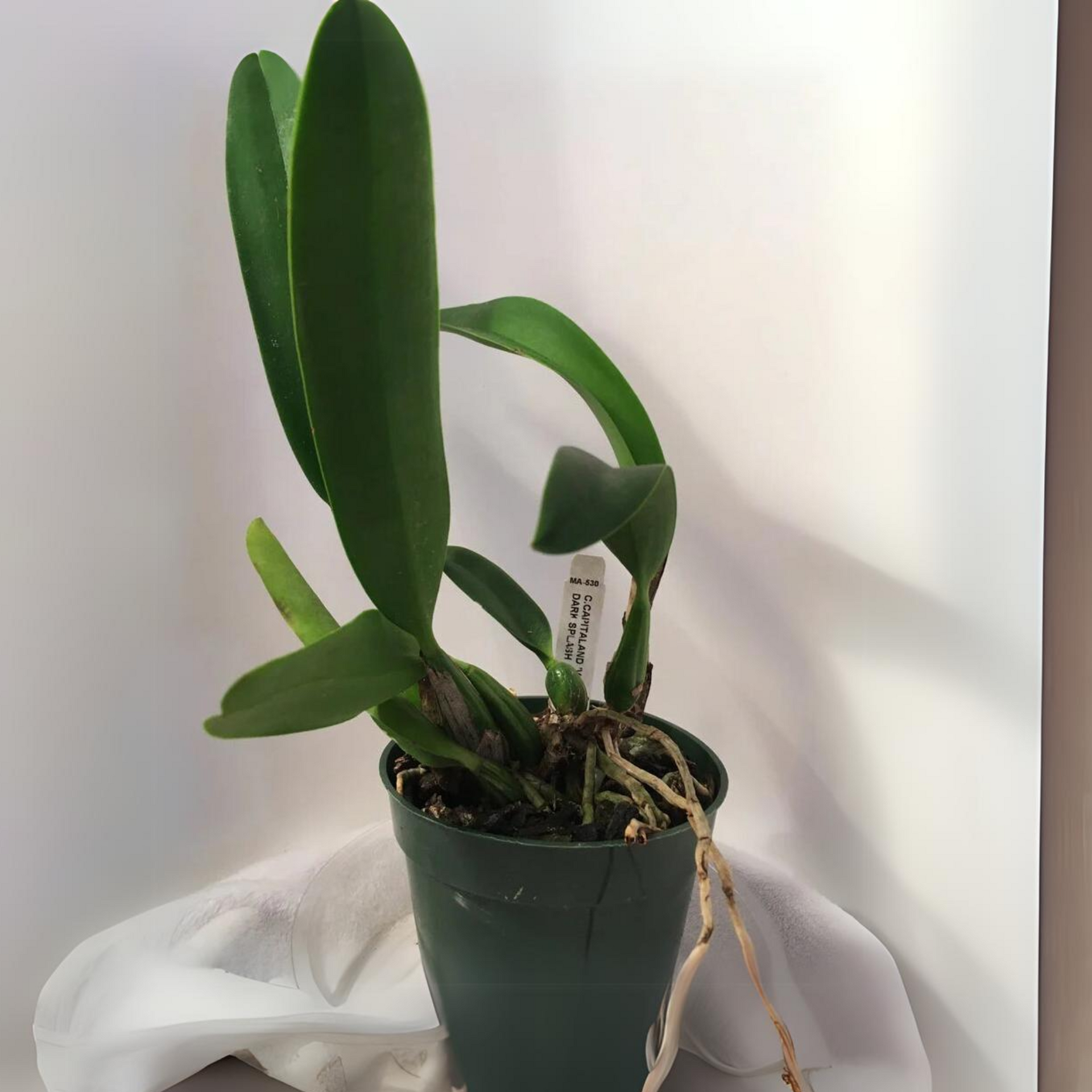


-
Green Paradise Offers Beautiful Cattleya
Orchid Pink-Voilet hybrid Plant
About Cattleya Orchid Pink-Voilet Hybrid Plant
Cattleya is a popular and highly prized genus of orchids known for its stunning and vibrant flowers. These beautiful orchids are native to various regions in Central and South America, as well as parts of the Caribbean.
Here are some key characteristics and features of the Cattleya Pink-Voilet orchid plant:
Flowers:
- Cattleya orchids are renowned for their large, showy, and fragrant flowers.
- The blooms can vary in size, but they often have a round, full appearance with several petals and sepals.
- The color range is extensive and includes shades of white, pink, lavender, magenta, yellow, and more.
- Some varieties even display intricate patterns and color gradients on their petals.
Pseudobulbs:
- Cattleya orchids have thickened, bulb-like structures known as pseudobulbs.
- These pseudobulbs store water and nutrients and serve as an adaptation to survive in their natural habitats where they may encounter periods of drought.
Leaves:
- The leaves of Cattleya orchids are typically leathery, broad, and lance-shaped.
- They grow alternately along the pseudobulb.
Growing Conditions:
- Cattleyas are epiphytic orchids, which means they naturally grow on trees or rocks without being parasitic.
- To grow them successfully, they require a well-draining potting medium (like orchid bark or sphagnum moss) and bright, filtered light.
- They prefer warm temperatures and relatively high humidity levels.
Watering and Care:
- Proper watering is crucial for Cattleya orchids.
- They should be watered thoroughly but allowed to dry between waterings to prevent root rot.
- During active growth, they require more water, and during their rest period, they need less.
- Regular feeding with a balanced orchid fertilizer will also help promote healthy growth and flowering.
Blooming Period:
- Depending on the variety, Cattleya orchids generally bloom once a year, although some may bloom more frequently.
- The blooming period can last several weeks to a couple of months, depending on environmental conditions and the health of the plant.
Propagation:
- Cattleya orchids can be propagated through division.
- When the plant has grown large enough and has multiple pseudobulbs, it can be carefully divided into smaller clumps, each with at least three healthy pseudobulbs.
Cattleya orchids are beloved by orchid enthusiasts and collectors for their striking appearance and delightful fragrance. They are often used in floral arrangements, corsages, and as gifts for special occasions. However, they require some specific care, so it's essential to understand their needs before adding one to your collection.Unveiling the Secrets: A Guide on How to Cultivate Cattleya Orchid Pink-Violet Plants
Introduction
Cattleya orchids are exquisite and enchanting flowering plants that have captivated gardeners and enthusiasts for centuries. Among the many varieties, the Cattleya orchid yellow stands out for its striking and vibrant color, exuding a sense of elegance and charm. Cultivating these yellow beauties requires proper care, attention to detail, and a touch of passion. In this article, we will delve into the secrets of successfully growing Cattleya orchid yellow plants, guiding you through each step of the journey.
Selecting the Right Location
- To ensure optimal growth and flowering, choosing the right location is paramount.
- Cattleya orchids love bright but indirect light.
- An ideal spot would be near an east or west-facing window where they can receive moderate sunlight during the day.
- Avoid placing them in direct sunlight as it can lead to sunburn and damage the delicate leaves and blooms.
Orchid Mix and Potting
- Cattleya orchids prefer a well-draining medium to prevent waterlogging and root rot.
- Orchid mixes that contain a blend of bark, perlite, and sphagnum moss work exceptionally well for these plants.
- When repotting, do it during the dormant season, typically after the flowering phase.
- Be gentle with the roots, and avoid compacting the mix too tightly around them.
Watering and Humidity
- Maintaining the right balance of moisture is crucial for Cattleya orchids.
- They require regular watering but dislike being waterlogged.
- The "soak and dry" method is widely recommended for these plants.
- Water thoroughly until the water drains out from the bottom of the pot, and then allow the medium to dry out before watering again.
- Depending on the climate, this might mean watering every 5 to 7 days.
- In addition, Cattleya orchids thrive in humid environments.
- If the air in your home is dry, consider using a humidity tray or a room humidifier to maintain humidity levels between 50-70%.
Temperature Requirements
- Cattleya orchids prefer moderate temperatures during the day and slightly cooler temperatures at night.
- They thrive in temperatures ranging from 65°F to 80°F (18°C to 27°C) during the day and around 10°F (5°C) lower at night.
- Avoid exposing them to extreme temperature fluctuations, as it can lead to stress and hinder their growth.
Fertilization
- To ensure robust growth and prolific flowering, fertilize your Cattleya orchids regularly during the active growth phase.
- A balanced orchid fertilizer with a formulation like 20-20-20 or 10-10-10 works well for these plants.
- Dilute the fertilizer to half or a quarter of the recommended strength and apply it every two to four weeks during the growing season.
- However, reduce or halt fertilization during the resting period when the plant focuses on flower production.
Pruning and Maintenance
- Pruning is essential for maintaining the health and appearance of your Cattleya orchid yellow plant.
- After the blooming phase, trim back the spent flower spike just above the node.
- Additionally, remove any dead or Violet leaves to promote better air circulation and prevent the spread of diseases.
Conclusion
Cultivating the stunning Cattleya orchid Violet plant is a rewarding and fulfilling experience for any avid gardener. By providing the right amount of light, humidity, water, and temperature, you can ensure that these exquisite orchids flourish and bloom vibrantly. Remember to be patient and observant, as each plant may have unique needs. With the knowledge shared in this guide, you are now equipped to embark on a successful journey of growing these alluring Cattleya orchid Violet plants and witnessing the magic they bring to your living space. Happy growing!






